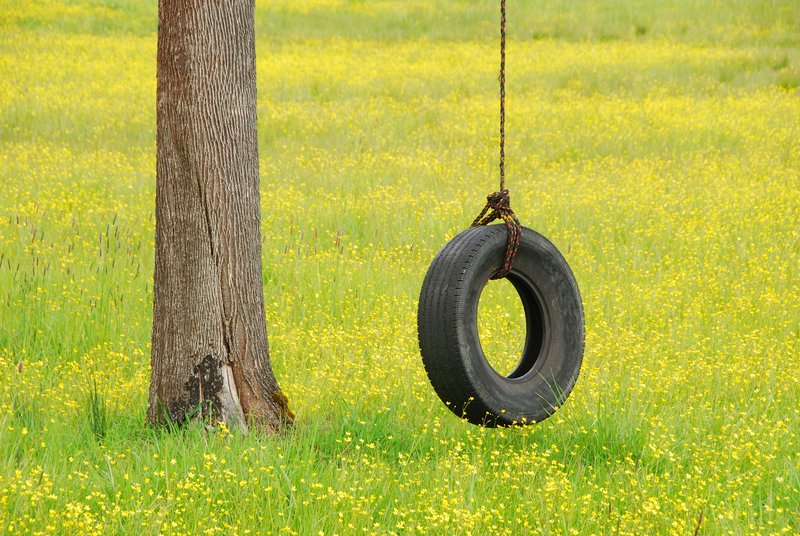Eco-Conscious Solutions for Recycling Old Clothes
Are you looking for sustainable and creative ways to get rid of old clothes? If so, you're not alone. With the rise of fast fashion and ever-changing trends, textile waste has become a significant environmental concern. Adopting eco-conscious solutions for recycling old clothes not only conserves natural resources but also reduces landfill waste and carbon emissions. In this extensive guide, we'll explore a host of practical, eco-friendly options for giving your used clothing a new lease on life.
Why Should You Recycle Old Clothes?
Textile waste is a growing global problem. According to the EPA, Americans alone discard nearly 17 million tons of textiles each year--most of which end up in landfills or are incinerated. The manufacturing and disposal of clothes consume immense amounts of water, energy, and chemicals, further straining our planet's resources.
- Reducing landfill waste: Synthetic fibers like polyester can take up to 200 years to decompose, releasing harmful greenhouse gases in the process.
- Saving resources: Recycling or reusing just one T-shirt saves around 2,700 liters of water--the equivalent of what one person drinks in two and a half years!
- Lowering carbon footprint: The fashion industry is responsible for approximately 10% of global carbon emissions. Eco-friendly solutions help mitigate this.
- Supporting circular economy: By keeping clothing in use for longer, we reduce the need for new production and promote sustainability.
Environmental Impact of Textile Waste
It's important to understand the scale of the problem. Not only do discarded clothes take up valuable landfill space, but when they decompose, they can leak dyes and chemicals into soil and water supplies. Moreover, the production process for new clothing often involves hazardous substances and intensive energy use. This is why finding eco-friendly ways to recycle old attire is crucial for a greener future.

Ways to Recycle Old Clothes Sustainably
No matter their condition, there's an eco-conscious solution for almost every piece in your wardrobe! Below, we'll outline a variety of options--ranging from donation and resale to upcycling and fiber recycling--for responsible clothing waste management.
1. Donate to Charities and Local Organizations
One of the most straightforward eco-conscious solutions for unwanted clothing is to pass them on to those in need:
- Non-profit thrift stores: Goodwill, Salvation Army, and local shelters accept gently used clothes and resell them to support community programs.
- Homeless shelters & crisis centers: Donating old warm clothing and shoes helps those facing difficult circumstances.
- Women's refuges: Many organizations provide clothing for women and children escaping domestic violence.
Ensure your clothes are clean and in wearable condition before donating. If pieces are too worn out, check with the charity about their textile recycling programs.
2. Sell or Swap Your Clothes
Give your old garments a second life--and make some extra cash--by selling them!
- Online platforms: Websites like Poshmark, Depop, thredUP, eBay, and Vinted are ideal for reselling stylish and branded items.
- Local consignment shops: These stores may purchase your gently used clothes or sell them on your behalf, sharing a portion of the profit.
- Clothing swaps: Host or join a swap event with friends, neighbors, or at community centers to trade items you no longer want.
Selling or swapping helps reduce the need for new clothing, cutting down textile production and associated pollution.
3. Upcycle Clothing into New Items
Unleash your creativity and transform your old wardrobe into something unique! Upcycling is one of the most innovative eco-friendly solutions for textile waste.
- Tote bags: Convert t-shirts or jeans into sturdy, reusable bags for shopping or storage.
- Rag rugs and quilts: Patch together scraps to create cozy, handmade items for your home.
- Kids' costumes or pet beds: Old clothes can make adorable dress-up outfits for children or comfy nests for your furry friends.
- Cleaning cloths: Cut up worn-out t-shirts into rags for dusting or cleaning; this replaces disposable paper towels.
There's no limit to what you can create. There are countless DIY tutorials online for beginners and seasoned crafters alike.
4. Participate in Brand Take-Back Programs
Many fashion brands now offer recycling programs that let you return old garments. These take-back schemes ensure unused clothing is recycled responsibly.
- H&M's Garment Collecting: Accepts clothing from any brand, in any condition, at most store locations. Items are resold, reused, or recycled into new fibers.
- Patagonia's Worn Wear: Encourages customers to return their used Patagonia gear for refurbishment or recycling.
- Levi's: Offers in-store collection points for worn jeans, which are repurposed into insulation.
- M&S Shwopping: Accepts old clothing in partnership with Oxfam to fund sustainable projects.
Always check the details and locations of each brand's program as policies may change.
5. Recycle at Textile Recovery Facilities
When clothes are beyond repair or reuse, textile recycling centers are your greenest option.
- Textile bins: Many municipalities set up textile recycling containers at designated collection points for clothing, shoes, and linens.
- Specialty recyclers: Companies like TerraCycle and Simple Recycling collect hard-to-recycle textiles for repurposing.
- Retailer drop-offs: Some stores partner with recycling firms to accept used garments for fiber breakdown and repurposing into new materials, such as insulation or industrial rags.
By choosing a reputable textile recovery facility, you ensure that even the most tattered clothes avoid landfill.
Innovations in Sustainable Clothing Recycling
The future of eco-friendly clothing disposal is bright with technological advancements. Here's how innovation is changing the landscape:
Fiber-to-Fiber Recycling
New processes break down old fabrics--even blends of cotton and polyester--into reusable fibers, which are then spun into yarn for new garments. Companies like Renewcell and Worn Again are pioneering such solutions, making it possible to produce "closed-loop" fashion where old clothes become new again.
Chemical and Mechanical Recycling Methods
- Mechanical recycling: Involves shredding clothes into fibers, which are used in making insulation, padding or new textiles.
- Chemical recycling: Advanced processes dissolve textile fibers and reconstitute them into new threads, suitable for high-quality garments. This works even for mixed fabrics or clothes containing elastane.
Recycling Synthetic Fibers and Plastics
With microplastic pollution a major concern, recycling synthetic clothing such as polyester or nylon prevents new plastics from entering the environment. Modern technologies allow these materials to be broken down and reformed without a loss in quality, reducing our reliance on virgin petrochemicals.
Tips for Extending the Life of Your Clothes
While recycling is vital, the most eco-friendly solution is to make your clothes last as long as possible. Here's how:
- Buy quality, not quantity: Well-made clothing lasts longer and is easier to repair.
- Learn basic repair skills: Sew on missing buttons, fix small tears and patch worn areas to keep clothes wearable.
- Wash less frequently and at lower temperatures: This preserves fabric quality and saves energy.
- Store items properly: Fold knits, hang woven fabrics, and avoid overcrowding to prevent unnecessary wear and tear.
- Avoid fast fashion temptations: Invest in timeless pieces that won't go out of style quickly.
How to Care for Different Fabrics
- Cotton: Wash separately to avoid dye transfer and line-dry to prevent shrinking.
- Wool: Air out regularly and gently hand wash only when necessary.
- Synthetics: Use a wash bag to capture microfibers and prevent them from entering waterways.

Common Myths About Clothing Recycling
Let's debunk some frequent misconceptions that prevent people from making eco-conscious choices:
- Myth 1: "No one wants my old clothes." Even worn or damaged items can often be recycled into new materials.
- Myth 2: "All clothing donations get resold." Only a portion of donated clothing is sold; the rest may be repurposed or recycled depending on condition.
- Myth 3: "Charity bins are a dumping ground." Clothes placed in reputable textile bins are sorted and processed responsibly.
How to Avoid Wishcycling
Wishcycling means tossing something into the recycling bin and hoping it will be recycled. Avoid this by checking what your local textile recycling center or program accepts.
Final Thoughts: Choosing Eco-Conscious Solutions for Old Clothes
Recycling old clothes isn't just about discarding what you no longer love--it's about mindfully stewarding our resources for a healthier planet. Whether you donate, resell, upcycle, or use high-tech recycling programs, every action makes a difference. Remember, the most sustainable wardrobe is one where every item is cherished, cared for, and ultimately given a second chance to shine.
- Look for local textile recycling initiatives in your area.
- Support brands that operate take-back or repair programs.
- Host swap events to encourage community-driven fashion sustainability.
By adopting these eco-conscious solutions for recycling old clothes, you can reduce your environmental impact and inspire others to join the movement towards a circular, sustainable fashion world.
Ready to begin? Start with your own closet, and take the first step towards a greener tomorrow.